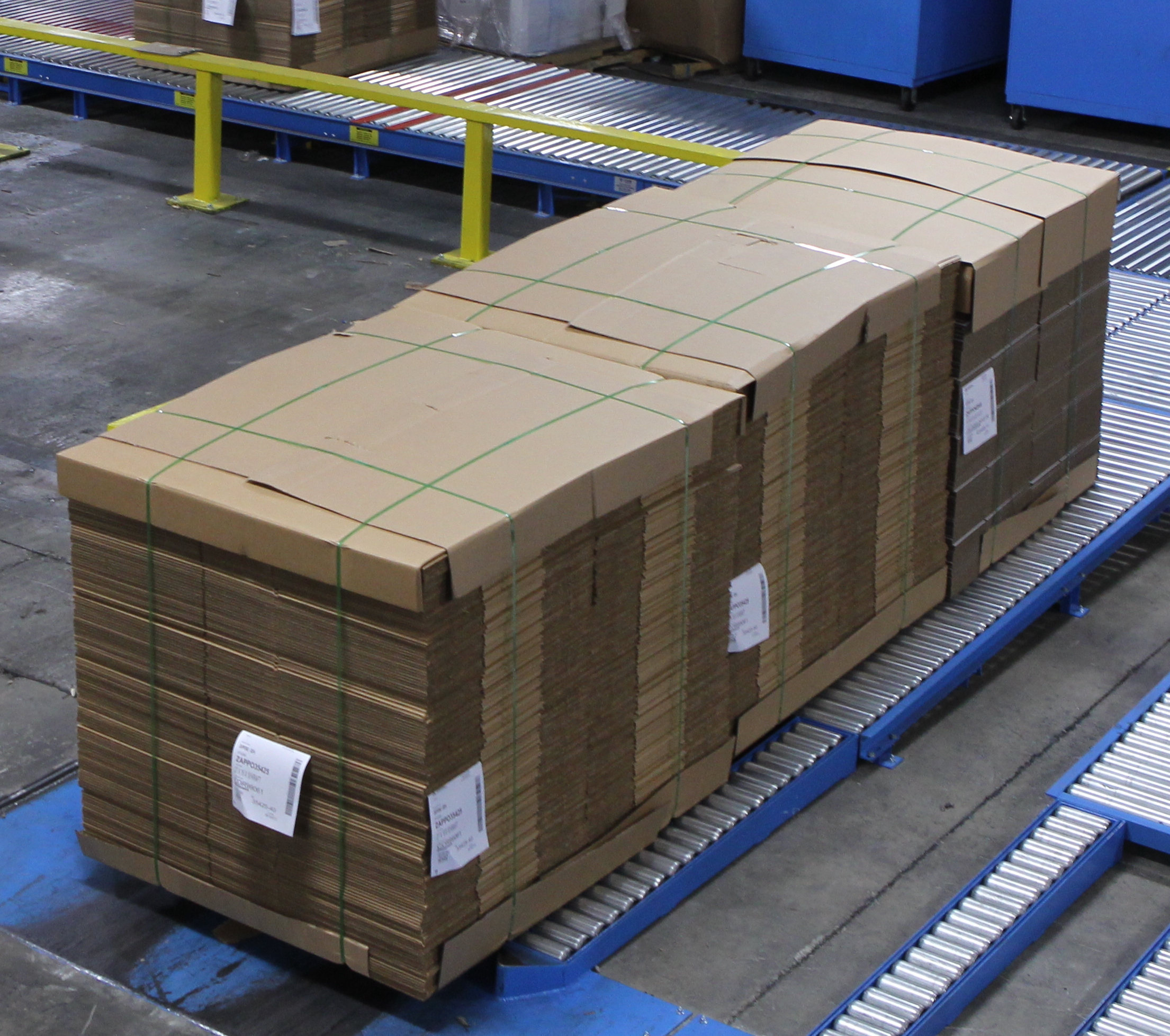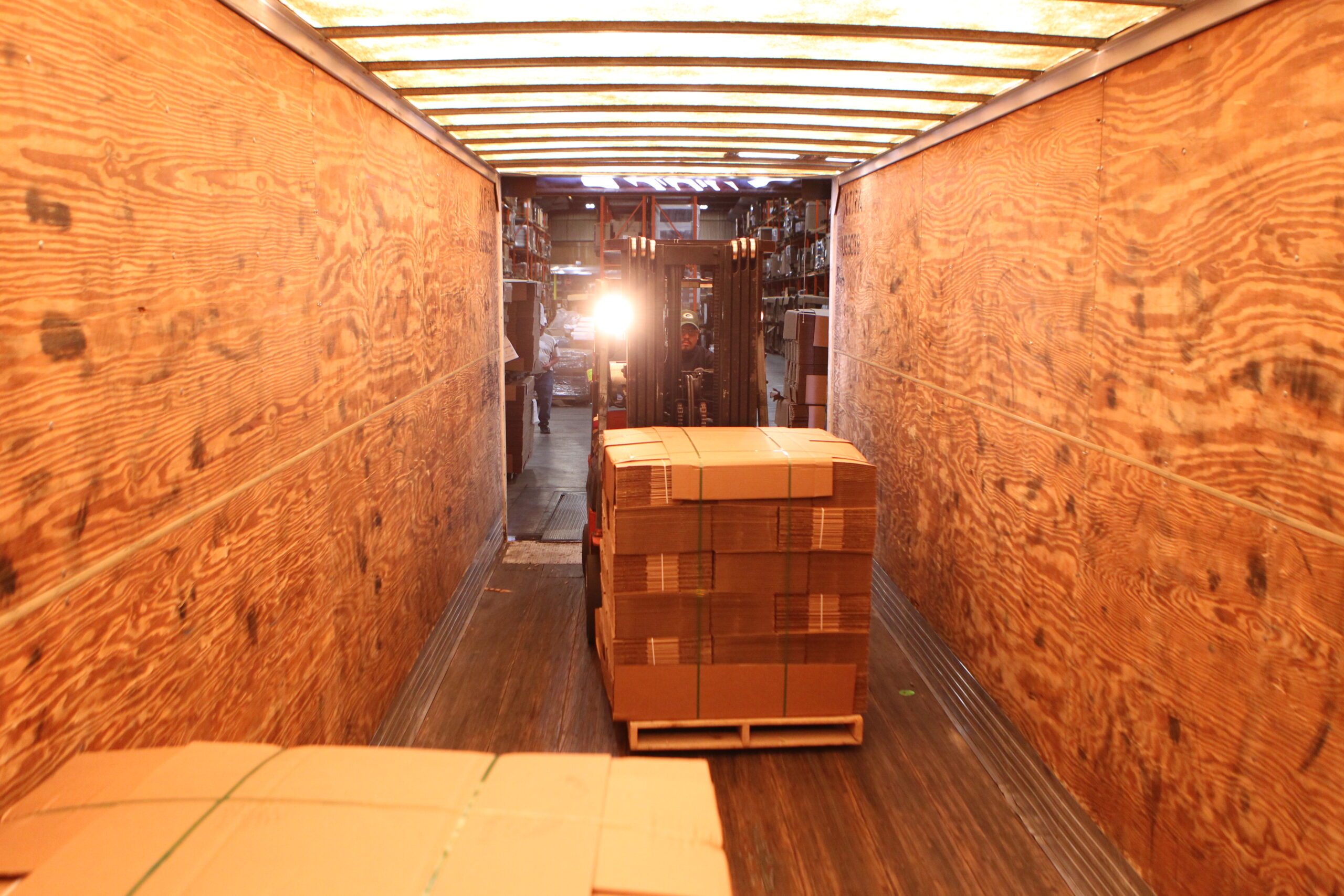Pallets are the workhorse of warehousing and shipping. On any given day in this country, it is estimated that 1.9 billion pallets are in use, either storing products or moving them. The standard wood pallet is 48” long x 40” wide, while others are 42” x 42” and 48” x 48.” These can hold up to 4,600 lbs. freight and, when filled, will usually take up about 3,500 sq. ft.
These simple frames (usually wood, but sometimes plastic or aluminum) are so common that it’s easy to take them for granted. However, you really shouldn’t. The way you “palletize” your operation can mean the difference between achieving efficiencies in freight costs and storage.
Here are a few tips on using your pallets wisely:
 Size determines how much product you can move effectively. The trailer of a tractor-trailer (we’ll call it “a truck” from here on out) is 98” wide, 110” tall, and 636” deep. If your pallet is 41” wide, you can stack them two wide in a truck. With a 48” long pallet, the truck could hold 13 pallets deep (636” divided by 48” = 13.25). With a truck that’s 110” tall, you could double-stack 40” tall pallets (with a 4 ½” skid). This would make a total of 52 skids at 3,412 sq. ft., or a total of 177,424 sq. ft. per truck.
Size determines how much product you can move effectively. The trailer of a tractor-trailer (we’ll call it “a truck” from here on out) is 98” wide, 110” tall, and 636” deep. If your pallet is 41” wide, you can stack them two wide in a truck. With a 48” long pallet, the truck could hold 13 pallets deep (636” divided by 48” = 13.25). With a truck that’s 110” tall, you could double-stack 40” tall pallets (with a 4 ½” skid). This would make a total of 52 skids at 3,412 sq. ft., or a total of 177,424 sq. ft. per truck.- Stack boxes of product carefully and evenly on each pallet. Distribute weight evenly inside each box and in the rows of boxes. Uneven weight distribution could cause the load to shift and the boxes (and more importantly your product) to be damaged. The heaviest boxes go on the bottom, the lightest on the top. Additionally, staggered or aligned boxes is preferred.
- Stack boxes in a cube, not a pyramid. Do this for maximum steadiness and protection, especially of the top rows. Avoid creating an overhang, which creates the potential for damage and reduces a pallet’s strength, reducing top to bottom compression by 30%.
 Height is important in storage. If your warehouse has racks, maximum unit height is key. If you have bulk storage, you need to know how high you can stack. For example, taking the pallet size above (48” long x 41” wide), you could add one more layer for about 20% more product per pallet for the same shipping cost. You would save money on pallets, since you would only use 43 skids instead of 52. In addition, your forklift drivers would be loading and unloading 9 less pallets per order, meaning you save in labor costs too (usually about $38 to $45 per truckload).
Height is important in storage. If your warehouse has racks, maximum unit height is key. If you have bulk storage, you need to know how high you can stack. For example, taking the pallet size above (48” long x 41” wide), you could add one more layer for about 20% more product per pallet for the same shipping cost. You would save money on pallets, since you would only use 43 skids instead of 52. In addition, your forklift drivers would be loading and unloading 9 less pallets per order, meaning you save in labor costs too (usually about $38 to $45 per truckload).
Use these tips to get the most value out of your pallets. If you’d like further tips on how to improve your warehousing and distribution processes, contact Premier.

